Chapter: 11th Nutrition and Dietetics : Chapter 10 : Proteins and Lipids
Classification of proteins
Classification
of proteins
Proteins are large
molecules formed by the combination of a number of aminoacids. About 20 amino
acids have been found to occur in proteins and are important from the point of
view of human nutrition. Amino acids can be classified as follows:
Nutritional Classification of Amino Acids
I. Essential Amino acids (Indispensable amino acids)
An essential amino
acid may be defined as one which is necessary for the growth and health of all
living organisms and which cannot be synthesised in the body and must therefore be supplied
through dietary intake. There are 9 amino acids considered essential for the
human infant, out of which Histidine is considered non-essential for the adult.
II. Semi-essential Amino acids (Conditionally essential amino acids)
Sometimes a
non-essential amino acid
can become essential.
During illness or conditions of trauma, or in other special circumstances the
need for an amino acid that is normally non-essential may become greater than
the body’s ability to produce it. In such circumstances, that amino acid
becomes essential for the ill person. Amino acids that behave this way are
referred to as ‘Conditionally essential’ amino acids for critically ill people.
Methionine
can
be
converted
to cystine, but
cystine cannot be converted to methionine. Similarly, phenylalanine can be
converted to tyrosine, but not vice-versa. yet these spare the requirements of
the corresponding essential amino acid. Hence, cystine and tyrosine are
sub-classed as semi- essential amino acids.
III. Non-Essential Amino acids (Dispensable)
These amino acids can be synthesized in the body and not necessarily obtained through dietary intake.
The nutritional
classification of amino acids is presented in table 10.1
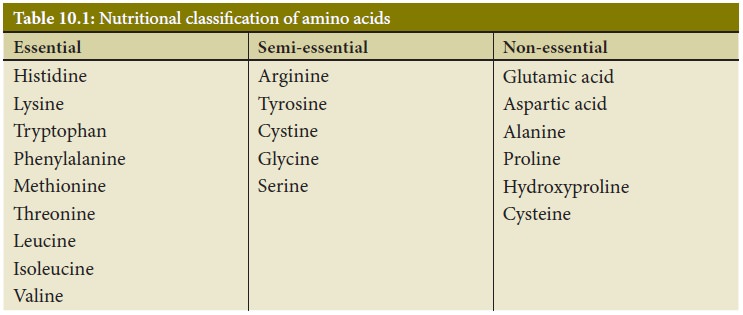
Classification of Proteins (Based on chemical composition)
a. Simple proteins: It is composed
entirely of amino acids only.
b. Conjugated or Complex
proteins: It
is made up of amino acids and other organic or inorganic compounds.
The
non-amino
acid
group
is termed as
Prosthetic group (e.g.)
Lipoproteins –
Chylomicrons
c. Derived proteins: These are derivatives
of proteins resulting from the action of heat, enzymes or chemical reagents.
This group also includes the artificially-produced polypeptides(e.g.)Fibrin
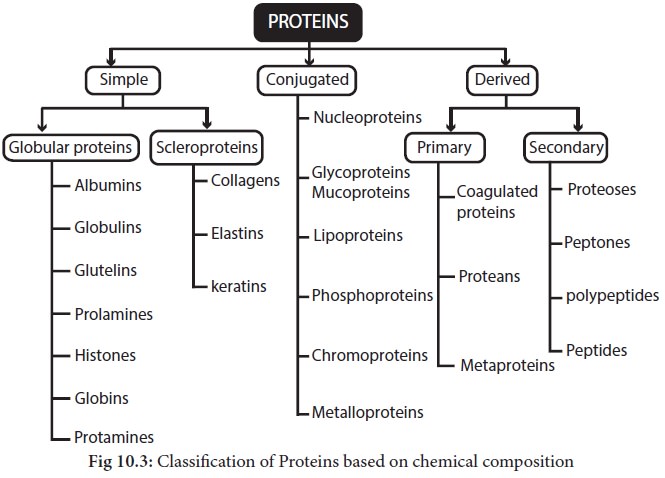
Classification of proteins (Based on nutritional value)
Proteins are
classified into two types based on nutrition view point as follows:
a. Complete proteins: These contain all the
essential amino acids in
sufficient quantity to
supply the needs of the body. They support life even if supplied as the sole
source of protein. These proteins are of animal origin (e.g) milk, meat,
poultry, egg and fish. The quality of these proteins is much superior to those
of incomplete proteins.
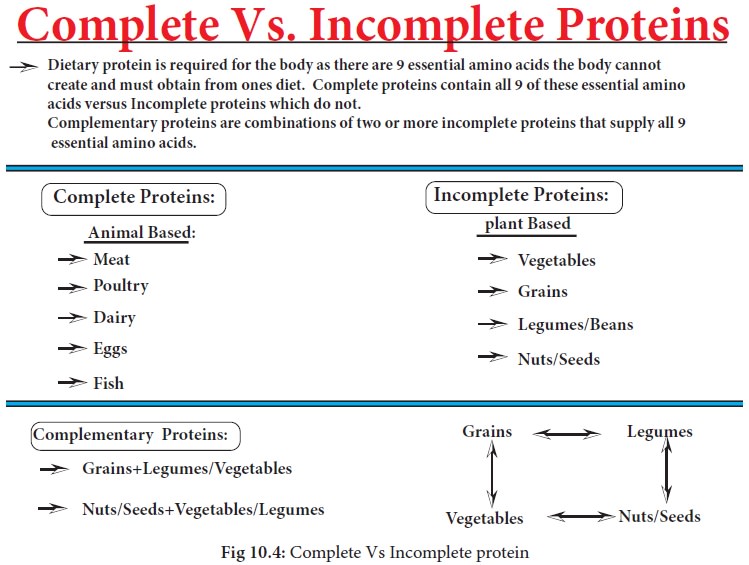
b. Incomplete proteins: These proteins are
deficient in one or more of the essential amino acids and therefore, they do
not support life on their own. All plant sources of proteins (i.e) vegetables,
fruits, cereals, pulses, nuts and oilseeds contain incomplete proteins to
varying degrees.
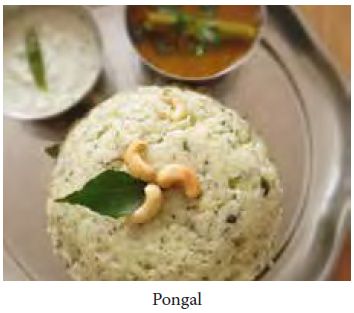
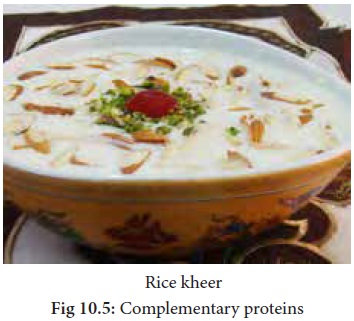
c. Complementary proteins
: If two sources of
incomplete proteins are combined in the same meal, the resulting protein may be
of better quality. These are called as Complementary proteins (e.g)
Pongal prepared using moong dhal and rice is of better quality than rice or
dhal cooked separately. Rice is deficient in aminoacid lysine, but rich in
methionine. Pulses are rich in lysine, but deficient in methionine. So, rice
and pulse combination will complement each other. Rice Kheer is another
example, where animal and vegetable proteins –milk and rice are cooked
together.
Related Topics